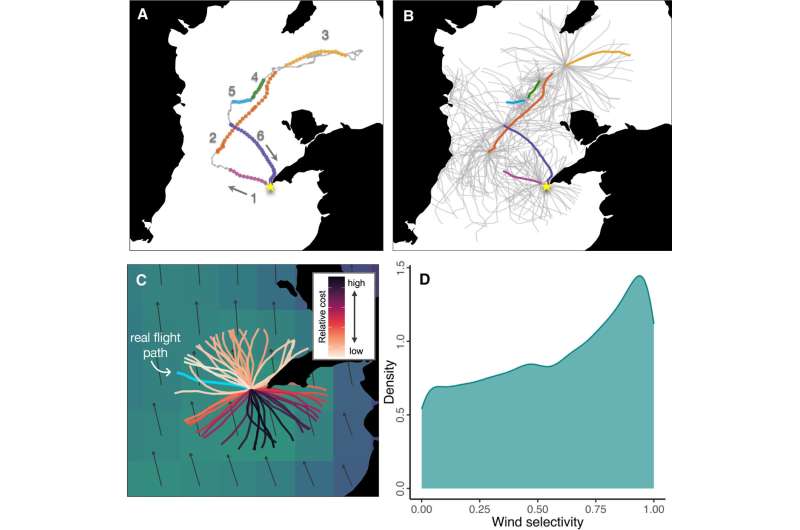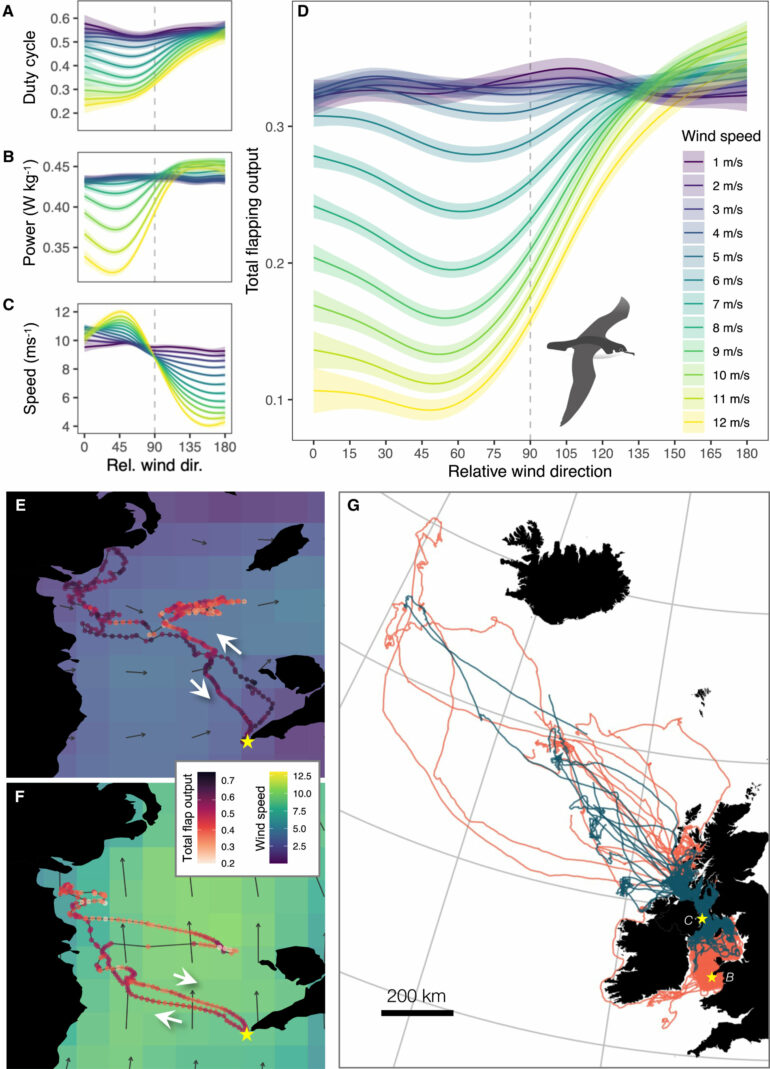Seabirds are the most threatened group of birds in the world. A new study led by researchers at Bangor University reveals the sophisticated decision-making seabirds known as Manx shearwaters must make to find fish at sea.
By measuring the effort it takes shearwaters to fly in different wind conditions, Dr. Stephanie Harris and colleagues discovered that the birds decide on where to fly to find fish based on the wind, carefully balancing the energy gained from food with the energy spent searching for it. Their research is published in the journal Current Biology.
On windy days, traveling in certain directions is much easier than on others. The research showed that on a windy day, shearwaters looked for food in places it was easier to fly to. In contrast, on calmer days, the birds favored places they anticipate will be good for finding fish.
Lead author Dr. Harris said, “Seabirds are faced with a huge ocean in which to find food, and being able to plan where to go is important.
“The implication is that shearwaters do have a plan for where they are going to feed, and also have a rough idea of how much it will cost in terms of energy to get there depending on the wind.”
The research took place at two island-based bird observatories, Bardsey Bird Observatory in North Wales and Copeland Bird Observatory in Northern Ireland. These islands are important breeding sites for Manx shearwaters, and this research has helped reveal the role of wind in influencing where shearwaters from these different colonies focus their feeding efforts at sea.

Analytical process for measuring wind selectivity along foraging trips of Manx shearwaters. © Current Biology (2025). DOI: 10.1016/j.cub.2024.12.017
This study was made possible by the most up-to-date miniaturization of tracking technology to follow seabirds in their natural environment—far at sea. Dr. Harris explains, “Using devices that weigh as little as 7g, we can not only follow where a bird goes, but measure its every wingbeat during flight, using technology similar to that found in a smartphone.”
Senior author Dr. Line Cordes, formerly based at Bangor University and now at the Norwegian Institute for Nature Research (NINA) says, “Climate projections forecast reductions in summer winds around the UK. Understanding the role of winds in how seabirds forage will be crucial to understanding the impact this will have on our seabirds.”
More information:
Stephanie M. Harris et al, Adjustable wind selectivity in shearwaters implies knowledge of the foraging landscape, Current Biology (2025). DOI: 10.1016/j.cub.2024.12.017
Citation:
Seabirds make clever use of winds to plan foraging trips over hundreds of kilometers (2025, January 14)



